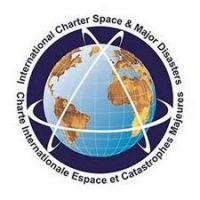The International Charter on Space and Major Disasters is a charter which provides for the charitable retasked acquisition of and transmission of space satellite data to relief organizations in the event of major disasters.
Initiated by the European Space Agency and the French space agency CNES after the UNISPACE III conference held in Vienna, Austria in July 1999, it officially came into operation on November 1, 2000 after the Canadian Space Agency signed onto the charter on October 20, 2000. Their troika of space assets was, respectively, ERS and ENVISAT, SPOT and Fomosat, and RADARSAT.
The assorted satellite assets of various private, national, and international space agencies provide for humanitarian coverage which is wide albeit contingent. First activated for floods in northeast France in December 2001,[1] the Charter has since brought space assets into play for numerous earthquakes, oil spills, forest fires, tsunamis, major snowfalls, volcanic eruptions, hurricanes and landslides.
The International Charter aims at providing a unified system of space data acquisition and delivery to those affected by natural or man-made disasters through Authorized Users. Each member agency has committed resources to support the provisions of the Charter and thus is helping to mitigate the effects of disasters on human life and property.




















